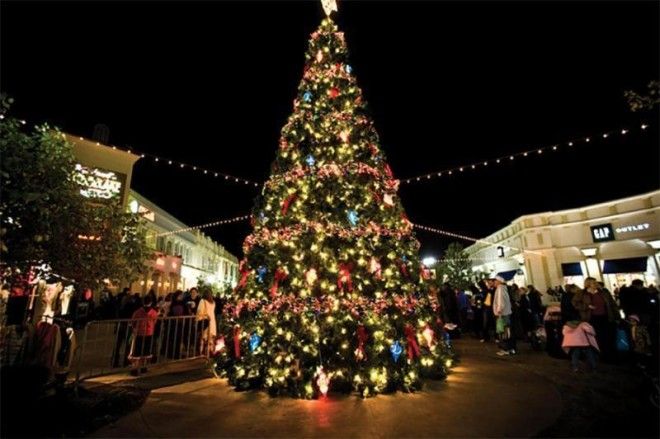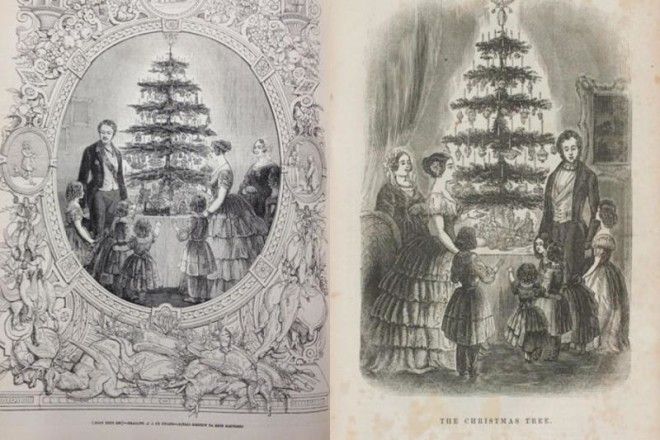
There are few things more symbolic of the holiday season than a well-decorated Christmas tree. As it happens, the tree was unwelcome on American soil for decades — laws even existed that penalized people for having one in their home. Indeed, the history of the Christmas tree reveals that there was a “war on Christmas,” and it was waged by Christians themselves.
In Ancient History
Long before the advent of Christianity, evergreen trees held special meaning for people during the cold winter months. Just as people today decorate their homes with pine, spruce, and fir trees in December, ancient cultures hung boughs over their doors and windows, believing that the branches would keep away witches, ghosts, and illness.
In the Northern hemisphere, ancient peoples celebrated the winter solstice, believing that the sun was a god and that winter came each year due to the sun god falling ill. Solstice was a time for celebration, because it indicated that the sun god would begin to recover, and evergreen boughs symbolized the greenery that would return in the summer months.
Greenery was symbolic for Egyptians as well, as it marked their belief that Ra would triumph over death as symbolized by the winter season. Early Romans too celebrated the solstice with a feast called Saturnalia, knowing that it would soon be time for their farms and orchards to be green and fruitful. Evergreen boughs adorned their homes and temples.
The Advent of the Christmas Tree

While many cultures throughout history have celebrated the end of winter with evergreen decorations, Germany is credited with starting the Christmas tree tradition as we know it. In the 16th century, devout Christians — primarily Lutherans, Presbyterians and Roman Catholics — brought decorated trees into their homes. Protestant reformer Martin Luther reportedly was the first to add lighted candles to a tree, awed by the twinkling stars he saw between trees on an evening walk.
The Christmas tree made its way to the States following German immigration patterns. The trees weren’t well received due to entrenched cultural attitudes, and a fear that a leisurely celebration such as Christmas would reduce labor productivity. In fact, in 1621 Puritan governor William Bradford wrote that he tried to stamp out the “pagan mockery” of the Christmas tree, arguing that it promoted excess and lacked any origin in Scripture. A few years later, the Puritans of New England made observation of the holiday illegal, and if anyone was caught celebrating they would have to pay a fine. Even after the ban was repealed, New Englanders sustained their disdain for the Christmas tree and the holiday, to the point that carolers would be prosecuted for “disturbing the peace.”
Advertising
This vitriol for the Christmas tree continued well into the 19th century, but popular icons, technological innovation and a desire to unite the U.S. would all play a role in tempering it. In 1850, Queen Victoria and her German Prince, Albert, were shown in London magazine Godey’s Lady’s Book standing around a Christmas tree. The editor, who used the image from an 1848 edition of the Illustrated London News, made sure to edit out any reference to who the family was so they would resonate with a middle class America. Coupled with the 1851 birth of the Christmas tree market and Ulysses S. Grant’s unity-minded 1870 decision to deem Christmas a federal holiday, cultural attitudes toward the holiday and its emblematic tree began to bend.

The advent of Thomas Edison’s long lasting carbon filament lamps brought about Christmas lights, replacing Luther’s 16th century fire hazard. Throughout the 20th century, Americans began decorating their evergreens with homemade ornaments and the tree — along with the holiday itself — became embedded into the fabric of nostalgic commercialism.
Soon, Christmas trees began to appear in town squares across the country, and have become a veritable industry in and of themselves: over 25 million real Christmas trees are sold per year in the United States, representing around $1.3 billion in annual sales. And to think, if it were up to the first Christians in the present-day United States, we might not have them.

